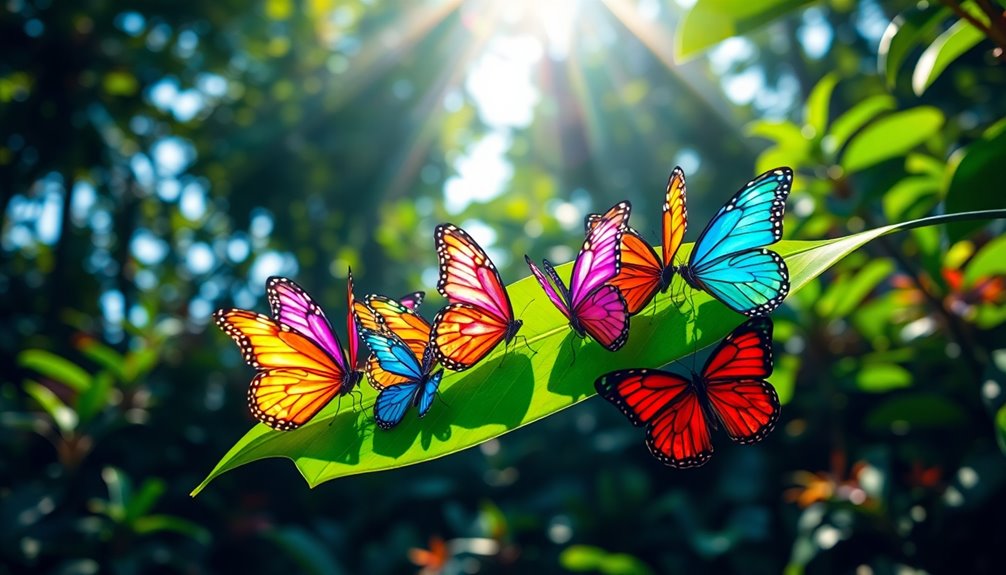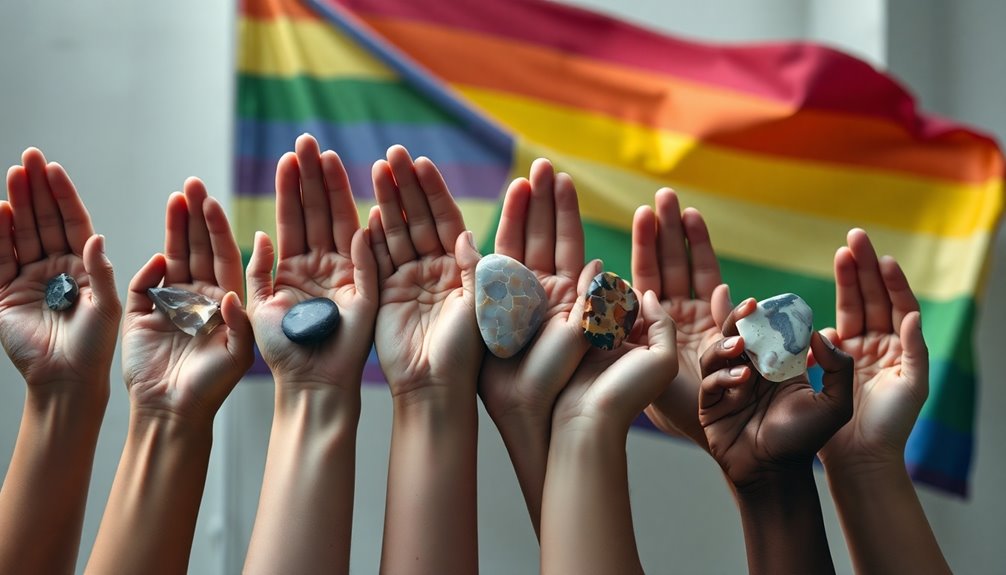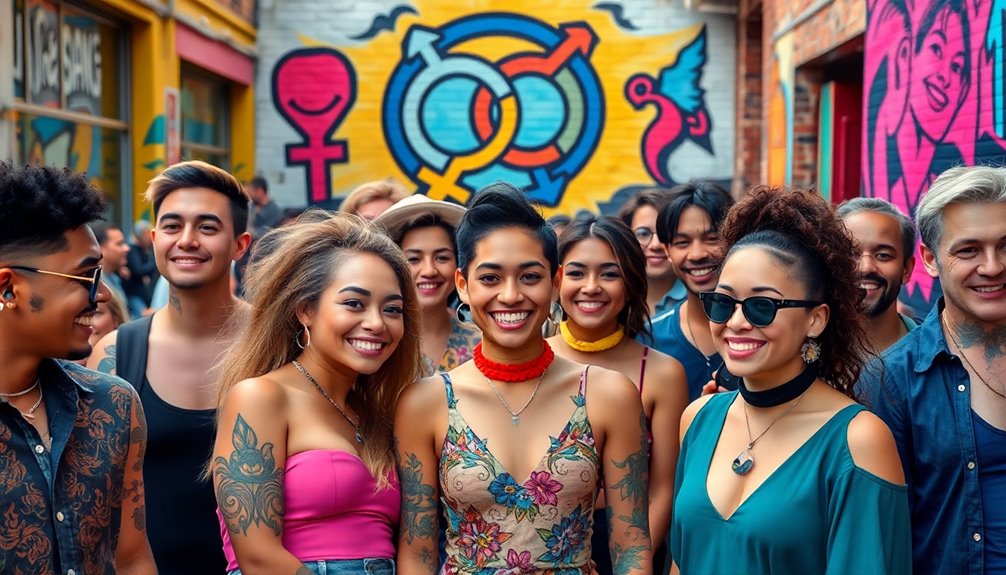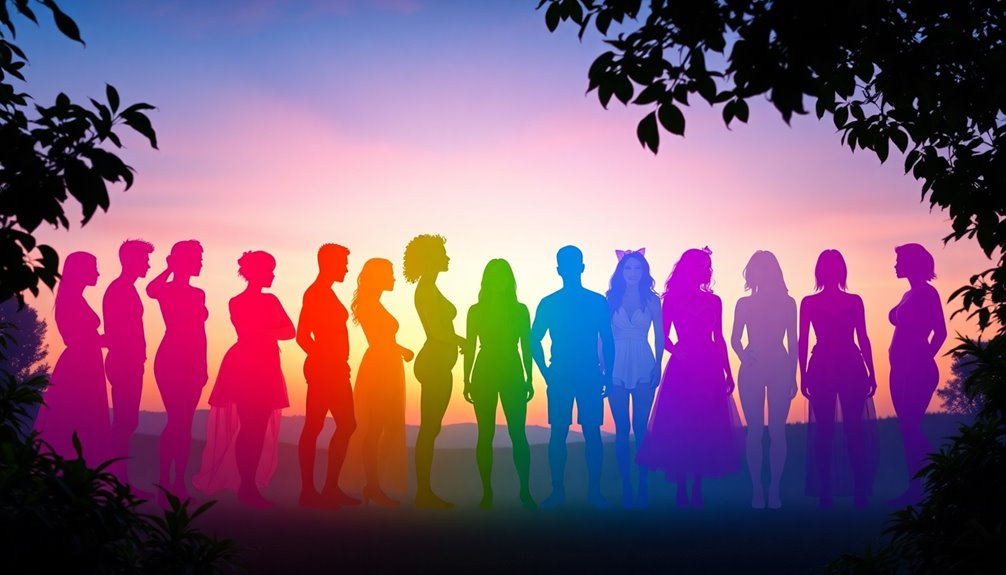You might think there are just two sexes—male and female—but that's not the whole picture. Biological sex exists on a complex spectrum, which includes intersex variations. Intersex individuals, who make up about 1.7% of the population, can possess a mix of male and female traits, complicating traditional classifications. Conditions like Turner syndrome and Klinefelter syndrome showcase this complexity. Historically, many cultures recognized more than a binary view of sex. Understanding this spectrum is essential, and the journey into the intricacies of sex might reveal even more about our experiences and identities.
Key Takeaways
- Biological sex exists on a spectrum, challenging the traditional binary classification of male and female.
- Intersex individuals, approximately 1.7% of the population, exhibit a mix of male and female characteristics.
- Variations in sex include intersex conditions such as hermaphrodites, male pseudohermaphrodites, and female pseudohermaphrodites.
- Historical and cultural perspectives recognize multiple gender identities beyond the male-female binary.
- Future research should focus on the complexity of sex and include diverse biological and gender identities.
Understanding Biological Sex Spectrum

Understanding the biological sex spectrum is essential, especially since it reveals that sex isn't just a binary concept.
Biological sex exists on a spectrum, with intersex individuals often exhibiting a mix of male and female characteristics. This challenges traditional classifications, as sex differences can arise from various chromosomal configurations. For instance, Turner syndrome (X0) and Klinefelter syndrome (XXY) demonstrate the complexity of biological sex beyond mere male and female.
Additionally, some individuals may present with ambiguous genitalia, further complicating identification. Chimerism, where one person has multiple sets of DNA, adds another layer to the sex spectrum.
Recognizing these variations helps you appreciate the rich diversity in human sexual development and the importance of inclusive understandings of biological sex.
Intersex Variations and Definitions

The complexity of biological sex encompasses a variety of intersex variations that defy traditional definitions. Intersex individuals represent about 1.7% of the population, blending characteristics of male and female.
These variations challenge binary categories and include:
- Hermaphrodites (herms) with both male and female traits
- Male pseudohermaphrodites (merms)
- Female pseudohermaphrodites (ferms)
Genetic conditions like Turner syndrome (X0) and Klinefelter syndrome (XXY) illustrate the broad spectrum of sex determination.
Intersex individuals may possess diverse chromosomes, hormones, and reproductive anatomy, revealing the intricate nature of biological sex.
Historical Perspectives on Sex

Throughout history, various cultures have acknowledged a spectrum of sex beyond the rigid male-female binary. Historical records show that ancient Greek scholars recognized variations in sex, challenging the binary understanding of male and female.
Communities like the Hijra in South Asia embraced non-binary identities, illustrating that multiple sex categories exist. However, the binary classification gained traction in the 18th century alongside eugenics, revealing how social constructs influenced perceptions of sex.
Intersex individuals, estimated at about 1 in 1,500 births, have existed throughout history, further complicating traditional categories. As contemporary science evolves, it increasingly acknowledges that biological sex doesn't fit neatly into a binary framework, but rather exists on an expansive spectrum that reflects human diversity.
Societal Impacts of Gender Diversity

As society evolves, recognizing and embracing gender diversity has profound impacts on individuals and communities alike. Acknowledging non-binary and intersex individuals challenges traditional views and promotes societal recognition, leading to positive change.
- Inclusive education fosters acceptance, reducing discrimination against diverse gender identities.
- Advocacy groups play a crucial role in postponing surgical interventions for intersex individuals until they can express their gender identity, emphasizing ethical practices.
- Improved mental health outcomes arise when society accepts all gender identities, combating stigma and promoting social justice.
Future Directions in Sex Research

While many still cling to a binary understanding of sex, future research must embrace the complexity of biological diversity. You should explore the spectrum of biological sexes, recognizing at least six distinct categories that can produce viable offspring.
Investigating intersex variations, which affect about 1.7% of the population, is essential for better medical practices and societal acceptance. Additionally, focus on Differences in Sex Development (DSDs) to understand health implications tied to sexual differentiation.
Addressing gender identity alignment's cognitive and psychological impacts can enhance mental health outcomes. Incorporating global perspectives and cultural attitudes toward gender-affirming care will foster inclusivity and improve health outcomes for individuals with atypical karyotypes, ultimately enriching our understanding of sex diversity.
Frequently Asked Questions
How Many Biological Sexes Are There?
When you think about biological sex, it's easy to assume it's just male or female.
However, the reality is more complex. You mightn't realize that variations like intersex exist, showing that biological sex includes a spectrum, influenced by genetics and hormones.
Factors like chromosomal differences can result in diverse reproductive systems that challenge traditional definitions.
Are There 7 Genders?
You might find that the concept of gender isn't fixed; it's often viewed as a spectrum.
In many cultures, people recognize more than two genders, and some frameworks identify seven distinct categories, like non-binary and Two-Spirit.
This diversity shows that gender identity can be fluid, with individuals sometimes identifying with multiple genders or changing their identities over time.
How Many Sexes Are There in Intersex?
Imagine a rainbow, vibrant and diverse, defying a simple spectrum.
When you consider intersex, it's not just about two colors; it's a blend of various hues. Intersex individuals can exhibit a mix of male and female biological characteristics, reflecting at least five distinct sexes in nature.
From herms to merms and ferms, the complexity of intersex variations challenges the traditional binary view, showing that nature thrives in diversity.
Embrace this spectrum!
How Many Biological Sexes Are There on Wikipedia?
When you explore Wikipedia, you'll find that biological sex isn't just a straightforward male-female classification.
It recognizes the complexity of intersex individuals and highlights at least six distinct biological sexes that can produce viable offspring.
These variations challenge the traditional binary model, emphasizing that sex exists on a spectrum.
You might also discover terms like herms, merms, and ferms, which further illustrate the diverse nature of biological sex.
Conclusion
In the kaleidoscope of human existence, sex isn't just black and white; it's a vibrant spectrum filled with unique hues. By embracing this diversity, you can help weave a more inclusive tapestry of understanding. Consider the beauty in intersex variations, the lessons from history, and the societal shifts unfolding around you. As you journey forward, remember that each person's experience adds depth to this ever-evolving narrative, inviting you to celebrate the complexity of life itself.










